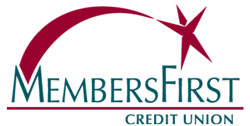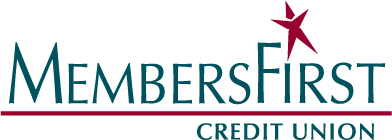Choosing to begin investing before making a plan and knowing where you stand financially is a little like putting the cart before the horse. In order to make the biggest impact for your best possible return, there are a few steps to consider before finally deciding when, how much and in what way your funds will begin working for you. Here are 5 steps to take when starting to invest.
Reduce expenses and pay off credit card and personal debt.
Although you can technically invest before your debts are paid off, financial planners advise strongly against this move as it is somewhat irresponsible. When it comes to debt, the interest rate you’re paying is almost always much higher than the rate of return on an investment, so it makes much more financial sense to put as much as you can behind paying off what you currently owe so you’ll pay less in interest over time and have more money available to you more quickly when it comes time to make your first investment. So, before your money goes near the market, here are a few debt reduction tips to consider:
Track your expenses. Cut what’s unnecessary or reduce the amount you’re spending in categories like entertainment and shopping. You can also reduce what you’re spending on seemingly fixed expenses like internet, cable and streaming services. Everything is up for negotiation! Use this expense reduction worksheet to record what you’ve spent over a period of one month and identify what needs attention.
Get rid of credit card debt. Examine every credit card statement and begin paying them off, starting with the one that has the lowest amount. Don’t focus on interest rates unless two debts have similar payoffs. In that case, start paying off the higher interest rate debt first. Your goal is to get rid of these bills completely, one at a time.
Pay off all personal and student loans. You want to reduce what you owe as much as possible, so make a plan using the money you have freed from your budget to pay back all money you’ve borrowed as soon as you can.
This process may take a while. What’s most important is that you have a plan to become debt-free so you have as much to invest as you can.
Build an emergency fund.
It’s never too early to start thinking about the future. Start setting up your emergency fund today so you’re never stuck in a tight spot again.
Here’s how to make it happen:
- Create a goal for your fund. Ideally, an emergency fund should have enough cash to cover your living expenses for 3-6 months.
- Review the expenses you have identified in your monthly budget to cut and set aside a portion of those funds for savings.
- Determine how long it will take you to reach your goal by allocating the saved or earned money to your emergency fund.
- Open a savings account specifically for this purpose.
- Set up automatic monthly transfers from your checking account to your emergency fund.
Now you can sit back and watch your emergency fund build itself into something substantial that will help you sleep better at night. Unexpected expenses or setbacks won’t throw you for a loop (or at least not for long!)
Plan for retirement.
Although investing is a strategy to consider when planning for retirement, retirement is a plan to consider when preparing to invest. No, you didn’t read that wrong. Since the funds you’re allocating toward retirement fall in a different category and are typically secured in a CD, IRA or 401(k), these funds are often inaccessible and not available to use to invest. As investing can be somewhat of a risk, placing funds in a retirement account poses much less risk. For this reason, it’s important to earmark funds for retirement that are not free to invest. Learn more about creating a retirement plan and access a checklist here.
Learn the basics of investing.
While you’re taking steps to reduce debt and plan for retirement so you can make strong investments, use the time to educate yourself on what to expect when entering the investment world. Don’t wait until your debts are paid and your retirement cushion is overstuffed to at least learn the basics. Consider these tactics while preparing to participate in your first investment.
- Brush up on investing terms by learning two new words daily.
- Read or listen to beginner-level investing books.
- Browse through online resources.
- Follow highly trusted advisers on YouTube and tune into investing podcasts.
- Consider attending a beginner’s course in investing.
You may not be investing money just yet, but the investment of knowledge will be well worth the return when you begin making investment decisions.
Choose an investment style.
Choose an investment style that best suits your personality, your needs and your financial standing. To do this, you’ll need a basic understanding of the major investment styles available in today’s market. These styles can be broken down into three dimensions:
- active vs. passive management
- growth vs. value investing
- small cap vs. large cap companies
Research these three dimensions of investment styles until you can determine which choice from each category suits you best. When you have chosen one from each dimension, you’ll know your investment style. This will enable you to pick the investments that you’ll be comfortable holding onto for a long time.
We’re excited to announce we will soon offer Wealth Management Services to not only help you determine your investment style but also manage your investments for your best possible return. Look for more on this invaluable service in the coming months!
As always, while you prepare to invest, MembersFirst Credit Union members have access to free financial counseling with one of our knowledgeable Certified Credit Union Financial Counselors. Schedule your free session when it’s convenient for you!


